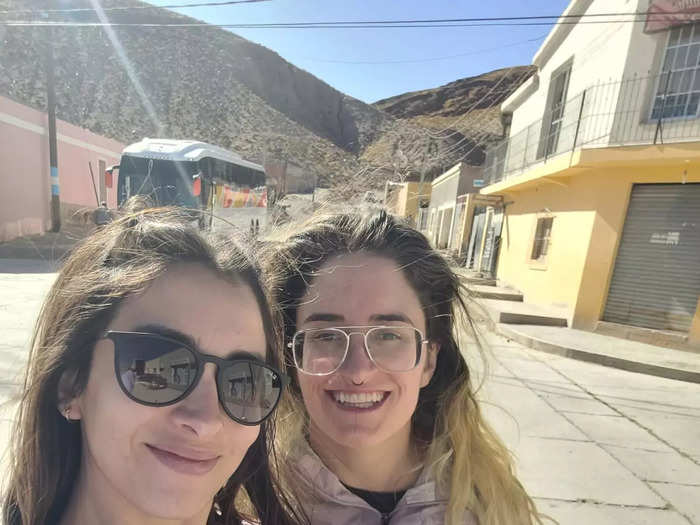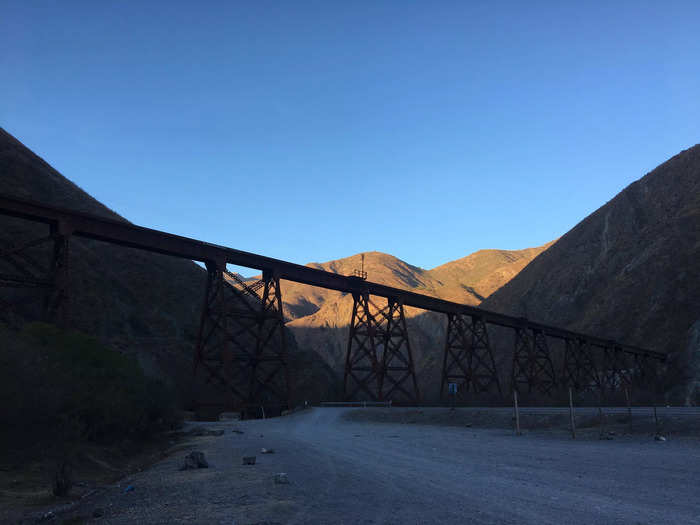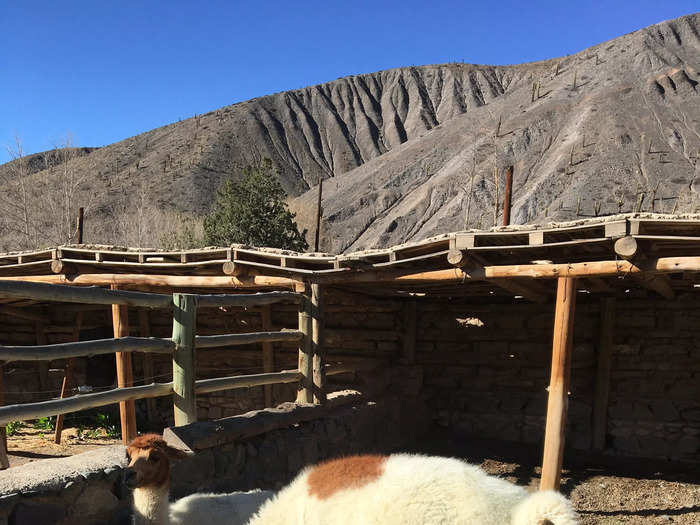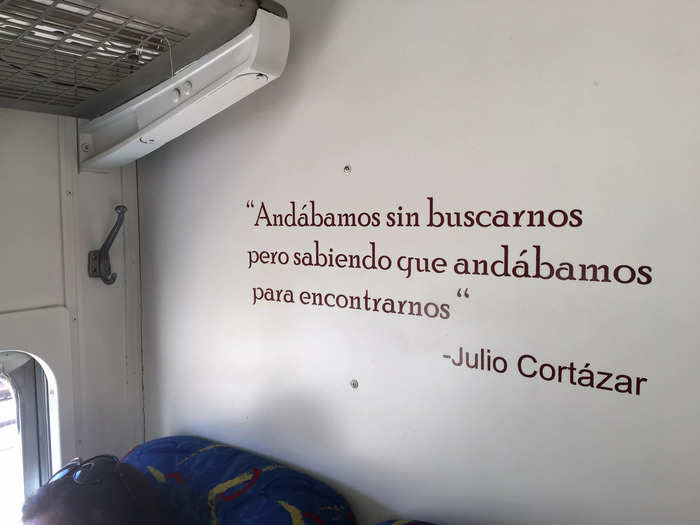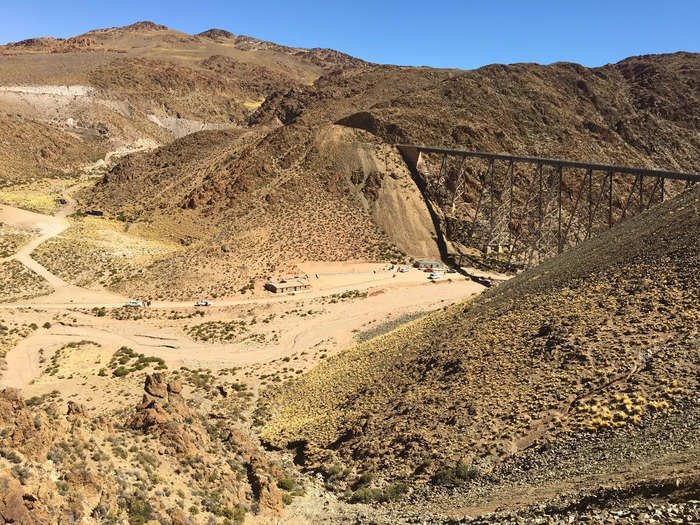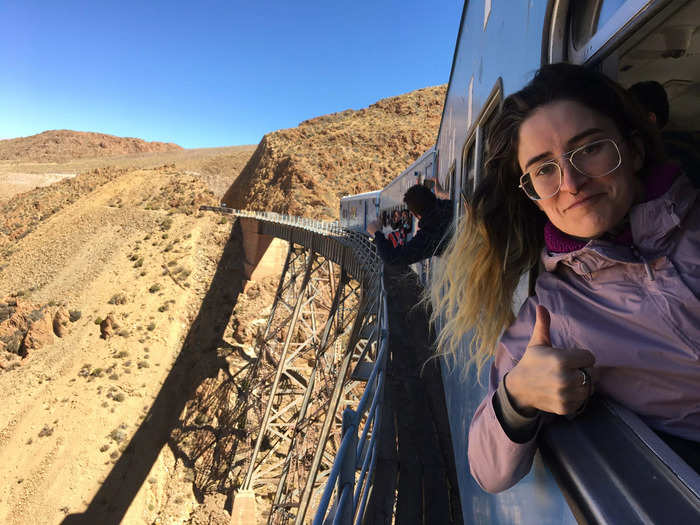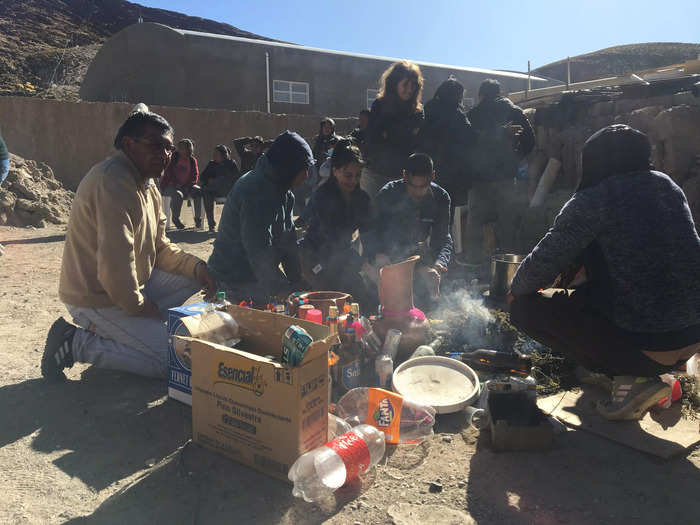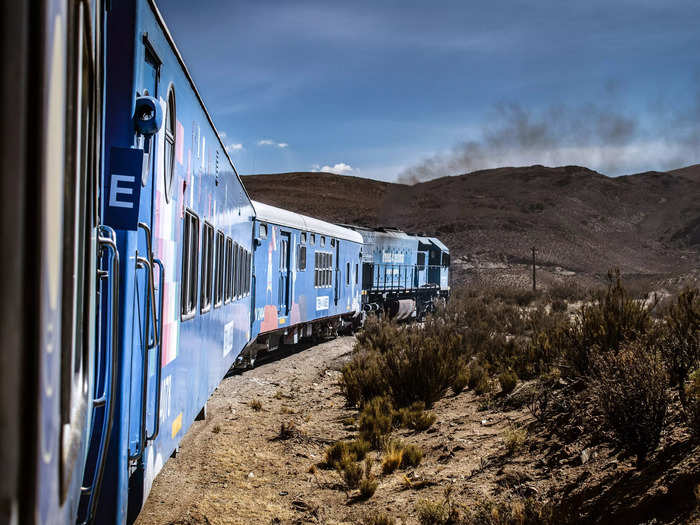A view of the Viaducto La Polvorilla from the Tren a las Nubes.Rodrigo Valle/Getty Images
- I rode the Tren a las Nubes, or Train to the Clouds, through Salta, Argentina, for the first time.
- It's one of the highest passenger trains in the world, rising about 13,845 feet above sea level.
Before my recent trip to Argentina, I'd only traveled through the country by plane or bus, but it's had trains running through it since the 1850s.
Following the railways' privatization in the late 20th century, the number of active passenger trains dwindled, but the most famous one — the Tren a las Nubes, or the Train to the Clouds — is still in operation. It's also one of the highest passenger trains in the world, rising about 13,845 feet above sea level.
My friend and I signed up for a round-trip, full-day excursion through northern Argentina's Salta province aboard the Tren a las Nubes. I paid 23,850 Argentine pesos (about $84 thanks to a parallel exchange rate) for my ticket.
Here's what the 13-hour journey was like.
To begin the journey, we boarded a bus in Salta that delivered us to the train's departure station.
On the bus, my friend and I shared a tortilla de grasa, which is a grilled tortilla sandwich with ham and white cheese. Christine Gilbert
The Tren a las Nubes originally connected Argentina and Chile when it was built in the early 20th century. It's since become a popular tourist attraction with a shorter route between San Antonio de los Cubres and Viaducto la Polvorilla.
First, we had to ride a bus to the train's departure station. So at about 6 a.m. on the morning of my journey, I waited to board a bus in Salta, a city with an elevation of approximately 1,187 feet, that would take us to San Antonio de los Cubres. The price of the bus ride was included with my ticket.
Though we had to stand in a line that snaked around to the ticket office, the check-in process only took 12 minutes.
We left the station at 7 a.m. and sipped mate, a caffeinated tea popular in Argentina, while the onboard tour guide shared a brief history of Salta, translating the information into both Spanish and English.
The bus cruised along National Route 51, ascending in elevation before stopping at Campo Quijano, a town known as "the portal of the Andes" where some passengers got off to take photos with an old train engine.
We passed the first viaduct of the trip and both felt a bit of altitude sickness during the bus ride.
We passed the Viaducto el Toro during the first part of the bus ride. Christine Gilbert
About 30 minutes into our trip, we stopped at Viaducto del Toro, an impressive structure that bridges over a river.
Along the way, locals sold clothing made of llama and alpaca wool, and I bought a pair of maroon leg warmers. Quinoa plants dotted the landscape, and we passed hundreds of native cacti that can grow to 70 feet tall.
As our bodies adjusted to the elevation gain, my friend got a headache, and I fell asleep. It was comforting to know that medics were onboard the buses and the train with oxygen canisters as a safety precaution.
We stopped for a breakfast break along the way in a small village called El Alfarcito.
El Alfarcito is a tiny village that was on the way to San Antonio de los Cobres. Christine Gilbert
The bus stopped at El Alfarcito, a small village where I saw a school, a few llamas, and a bus painted like the Scooby Doo Mystery Machine.
We ate our breakfast, which consisted of several kinds of dry bread and tea made of coca leaf and hot water.
Andean groups have long used the plant as a high-altitude aid, and scientific research suggests that the leaves can cause biochemical changes in the body that lead to performance enhancement at high altitudes. The dark-green liquid tasted a bit too much like grass for my liking.
Maybe it was the coca leaves, or maybe I was just adjusting to the higher altitude, but the mild headache I'd started to develop subsided after I drank a small cup of the tea.
About five hours after our bus' departure, we finally boarded the Tren a las Nubes in San Antonio de los Cobres.
Each car had quotes about travel painted on the walls from luminaries like Lao Tzu to Julio Cortázar. Christine Gilbert
By 12 p.m., we reached San Antonio de los Cobres, a town that sits at an elevation of approximately 12,385 feet, and boarded the Tren a las Nubes.
Our assigned seats, which were comfortable but certainly not plush, were sectioned into a group of four. Big windows were on either side of the train, meaning everyone saw the same views since the train took the same route in the opposite direction on the way back.
A snack cart came by twice during the ride to sell items like ham sandwiches, but the tortilla de grasa — a grilled tortilla sandwich of ham and white cheese — my friend and I ate earlier looked tastier and cost less.
Hot water was also available for people who had wanted to fill their thermoses to make mate. Luckily, we had access to bathrooms at the end of each car that were basic but clean.
The best parts of the train ride were looking out at the landscapes and spotting wildlife.
I saw a chinchilla in the wild for the first time in my life during the rail journey. Christine Gilbert
Our train guide gave an overview of sites and the animals we might see, including pumas and "big-butted chinchillas."
About 15 minutes later, I saw a chinchilla's furry behind hurtling over a hill, marking the first time in my life I'd seen one of the creatures.
We also passed the Termas de Pompeya, an undeveloped hot spring.
Train passengers were eager to get photos of the Viaducto la Polvorilla, the most famous attraction on the train's route.
The Tren a las Nubes slowed down on the Viaducto la Polvorilla so passengers had time for photos. Christine Gilbert
Viaducto la Polvorilla is the most famous site on the route. Built in the 1930s, it's the highest point on the journey and spans the length of a canyon.
About 45 minutes after passing the viaduct, we approached our turning point, an abandoned silver mine called Mina Concordia.
The train stopped for about 15 minutes, so I photographed old mining structures from the porthole windows. By 1 p.m., the train was heading back toward Viaducto la Polvorilla.
Thankfully, the train slowed to give everyone enough time to take photos out the window.
We stopped and got off the train to watch a flag ceremony.
The Tren a las Nubes passengers gathered for the flag ceremony. Christine Gilbert
I bought another tortilla and watched the Argentinian flag being raised as the national anthem crackled over a speaker.
Once we got back on the train, a passenger in our car started feeling light-headed, so a medic gave her oxygen.
Our last stops were at a local festival in San Antonio de los Cobres and a UNESCO World Heritage site called the Qhapaq Ñan in Santa Rosa del Tastil.
One of the customs of the Day of Pachamama is to put offerings in a hole. Christine Gilbert
We alighted from the train in San Antonio de los Cobres, ate empanadas for lunch, and walked to an annual festival honoring Pachamama, the name of the Andean people's Mother Earth deity.
Locals gathered in an outdoor courtyard, where some poured food and drinks into a hole by a smoky fire as offerings and others spun around, waving handkerchiefs as they danced.
We left San Antonio de los Cobres on our bus at 4:30 p.m. and made our last stop at the village of Santa Rosa del Tastil.
In pre-Columbian times, Santa Rosa del Tastil was a large city, and a waypoint on the Qhapaq Ñan, also known as the Inca Trail. The only indicators of this area's former life as a metropolis are well-preserved ruins and a small museum called the Museo de Sitio Santa Rosa de Tastil.
I passed shops selling souvenirs and bags of Andean potatoes, a popular item for tourists to purchase and cook at home. We arrived in Salta at 8 p.m., making it a 13-hour trip in total.
I wouldn't have gotten the same experience crossing the Viaducto la Polvorilla and spotting wildlife if I was exploring by car, so I'm glad I opted for the Tren a las Nubes.
The Tren a las Nubes runs between San Antonio de los Cubres and Viaducto la Polvorilla. Christine Gilbert
The landscapes I saw driving around Salta with my friends were equally as stunning as the ones I saw from the train window. However, I got unique views of the Viaducto la Polvorilla and wildlife that I wouldn't have behind the wheel.
I'd definitely recommend that solo travelers without a car take the Tren a las Nubes to explore northern Argentina's landscapes. Even though the Tren a las Nubes felt older than some of the trains I've taken in the US, it seemed well-maintained and was clean inside.
Train travel isn't for everyone, though. Individuals who are sensitive to altitude sickness should think twice before taking the train, or at least try to acclimate ahead of time.
I also wouldn't recommend the trip to those planning a very short trip (a week or less) to Argentina. Squeezing in a full-day visit to Salta from Buenos Aires wouldn't exactly be a relaxing feat.
But tourists who plan on spending more than a week here and want to experience several days up north in Salta should definitely consider taking this ride to the clouds.

